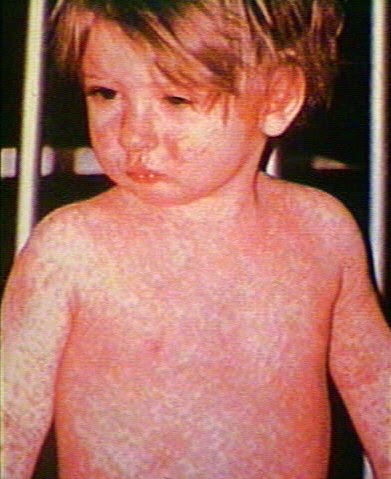Measles also called rubella, is a childhood infection caused
by a virus. Once quite common, measles can now almost always be prevented with
a vaccine. Measles can be serious and even fatal for small children. While
death rates have been falling worldwide as more children receive the measles
vaccine, the disease still kills more than 100,000 people a year, most under
the age of 5.
Causes
The cause of measles is a virus that replicates in the nose
and throat of an infected child or adult.
When someone with measles coughs, sneezes or talks, infected
droplets spray into the air, where other people can inhale them. The infected
droplets may also land on a surface, where they remain active and contagious
for several hours.
You can contract the virus by putting your fingers in your
mouth or nose or rubbing your eyes after touching the infected surface.
Symptoms
 Measles signs and symptoms appear 10 to 14 days after exposure
to the virus. Signs and symptoms of measles typically include:
Measles signs and symptoms appear 10 to 14 days after exposure
to the virus. Signs and symptoms of measles typically include:
Fever
Dry cough
Runny nose
Sore throat
Inflamed eyes (conjunctivitis)
Koplik's spots
A skin rash made up of large, flat blotches that often flow
into one another
The infection occurs in sequential stages over a period of
two to three weeks.
Vaccinations
Measles vaccine is usually administered as MMR, a
combination vaccine that provides protection against three viral diseases:
measles, mumps, and rubella. The MMR vaccine is strongly endorsed by medical
and public health experts as safe and effective. Two doses are recommended for
children:
The first dose at 12–15 months of age
The second dose
before entering school, at 4–6 years of age.
No comments:
Post a Comment